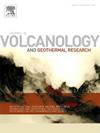利用铀-钍不平衡测定硅质沉积物的年代
IF 2.3
3区 地球科学
Q2 GEOSCIENCES, MULTIDISCIPLINARY
Journal of Volcanology and Geothermal Research
Pub Date : 2025-03-26
DOI:10.1016/j.jvolgeores.2025.108324
引用次数: 0
摘要
大陆热液系统是地热能源和矿产勘探所捕获的热量和物质的地壳运输的重要途径。因此,了解它们的时间演化和寿命对资源表征具有重要意义。微层状硅质烧结矿——高温储层的常见表面表达式(>;170°C),具有追踪热液历史的潜力。地热储层通常位于含铀的硅质火山岩中,地下流体-岩石相互作用将铀提取成热液流体。结合在表面烧结矿床中的U有可能提供U - th不平衡定年的选择。我们的重点是来自智利北部Altiplano的El Tatio间歇泉田的样本,这是安第斯山脉最大的地热系统。我们得到的230Th/U年龄,以及水和沉积物元素组成,表明U和Th的浓度沿着烧结围裙可预测地变化。而远端相含铀浓度最高(>;50 μg/g)受碎屑Th校正的影响最小,可以表现出疑似开系统行为。相比之下,细菌席和其他多孔结构通常集中的中间相只有微量的U (<;0.1 μg/g),这导致不可靠或地质上不可能的日期。近端相的年代往往最一致。将现有的14C年龄与230Th/U的结果进行比较,发现230Th/U年龄往往比14C年龄年轻,支持14C死碳影响的存在。新的数据证实,El Tatio地热活动的开始可以追溯到晚更新世。本文章由计算机程序翻译,如有差异,请以英文原文为准。
Applying U–Th disequilibrium for dating siliceous sinters
Continental hydrothermal systems are critical avenues for the crustal transport of heat and mass captured for geothermal energy and mineral exploration. Thus, understanding their temporal evolution and longevity is important for resource characterization. Deposits of microlaminated siliceous sinter, common surface expressions of high temperature reservoirs (> 170 °C), have the potential to trace hydrothermal histories. Geothermal reservoirs are often located within uranium-bearing silicic volcanic rock where subsurface fluid-rock interactions extract U into hydrothermal fluids. U incorporated in the surface sinter deposit has the potential to provide a U–Th disequilibrium dating option. We focus on samples from El Tatio geyser field in the Altiplano of northern Chile, the largest geothermal system in the Andes. Our resulting 230Th/U ages, along with the water and deposit elemental compositions, suggest concentrations of U and Th vary predictably along the sinter apron. While distal facies containing the highest U concentrations (> 50 μg/g) are least affected by detrital Th corrections, they can display suspected open-system behavior. In contrast, more medial facies, where bacterial mats and other porous textures are commonly concentrated, have only trace amounts of U (< 0.1 μg/g), which leads to unreliable or geologically improbable dates. Proximal facies tend to date most consistently. By comparing existing 14C ages with 230Th/U results, 230Th/U ages tend to be younger than the 14C ages, supporting the presence of a 14C-dead carbon influence. New data confirm that the onset of geothermal activity at El Tatio goes back to the late Pleistocene.
求助全文
通过发布文献求助,成功后即可免费获取论文全文。
去求助
来源期刊
CiteScore
5.90
自引率
13.80%
发文量
183
审稿时长
19.7 weeks
期刊介绍:
An international research journal with focus on volcanic and geothermal processes and their impact on the environment and society.
Submission of papers covering the following aspects of volcanology and geothermal research are encouraged:
(1) Geological aspects of volcanic systems: volcano stratigraphy, structure and tectonic influence; eruptive history; evolution of volcanic landforms; eruption style and progress; dispersal patterns of lava and ash; analysis of real-time eruption observations.
(2) Geochemical and petrological aspects of volcanic rocks: magma genesis and evolution; crystallization; volatile compositions, solubility, and degassing; volcanic petrography and textural analysis.
(3) Hydrology, geochemistry and measurement of volcanic and hydrothermal fluids: volcanic gas emissions; fumaroles and springs; crater lakes; hydrothermal mineralization.
(4) Geophysical aspects of volcanic systems: physical properties of volcanic rocks and magmas; heat flow studies; volcano seismology, geodesy and remote sensing.
(5) Computational modeling and experimental simulation of magmatic and hydrothermal processes: eruption dynamics; magma transport and storage; plume dynamics and ash dispersal; lava flow dynamics; hydrothermal fluid flow; thermodynamics of aqueous fluids and melts.
(6) Volcano hazard and risk research: hazard zonation methodology, development of forecasting tools; assessment techniques for vulnerability and impact.

 求助内容:
求助内容: 应助结果提醒方式:
应助结果提醒方式:


